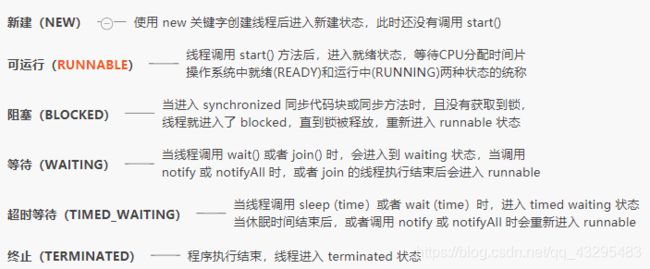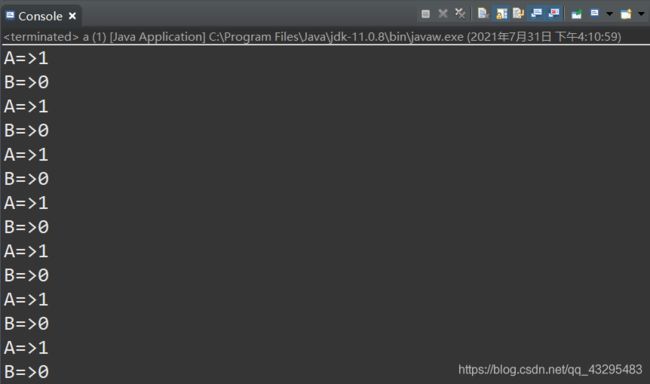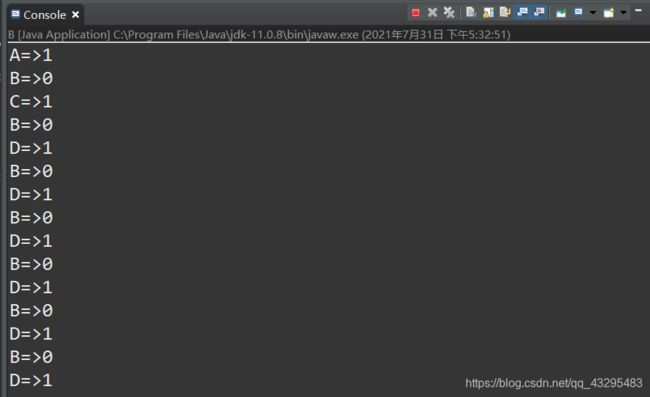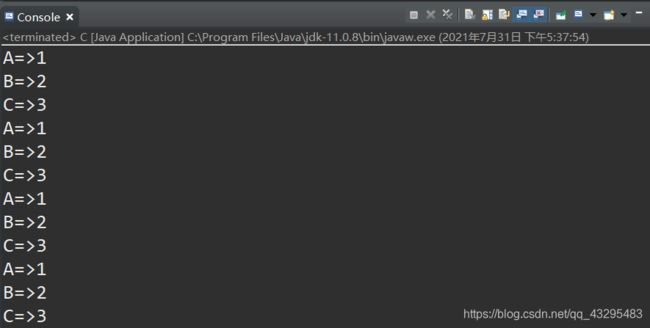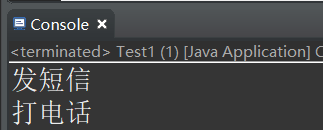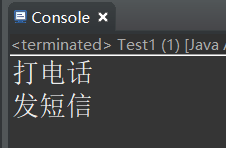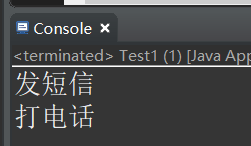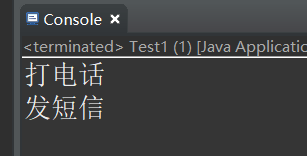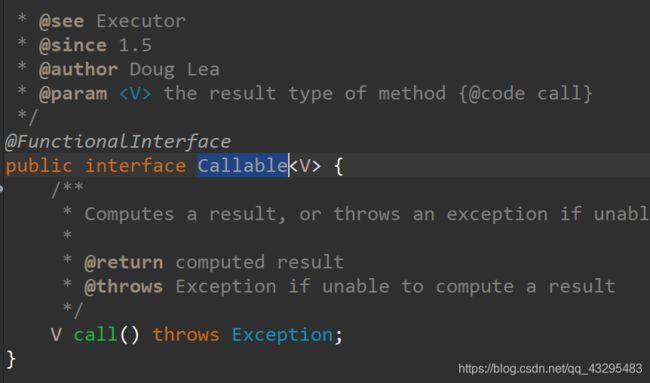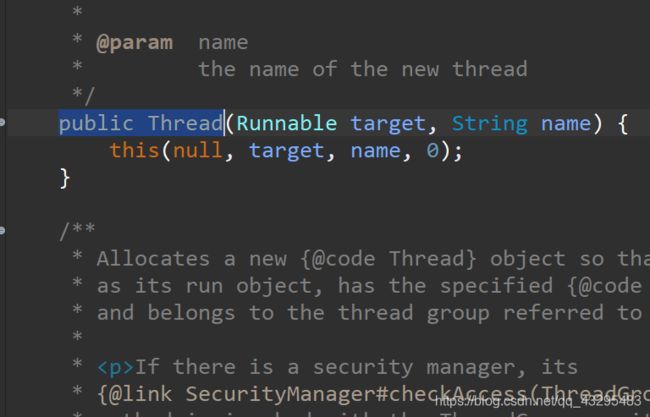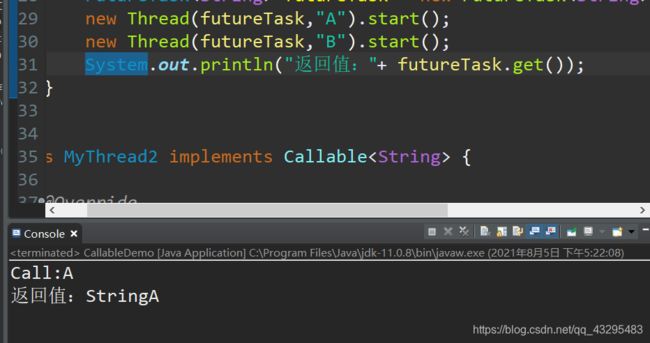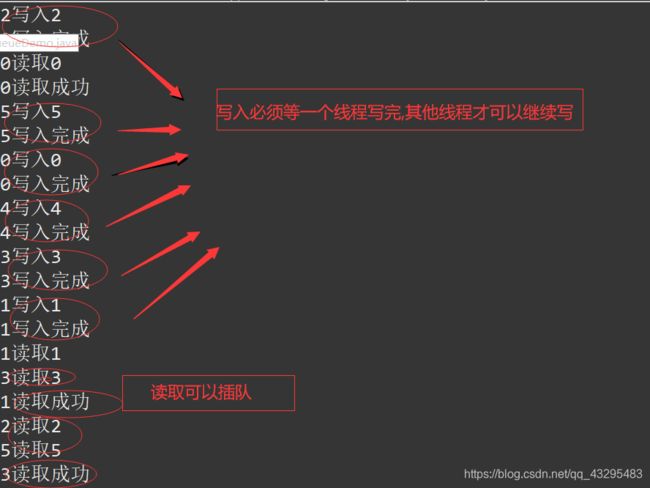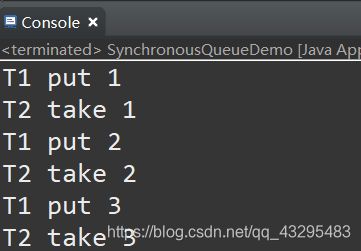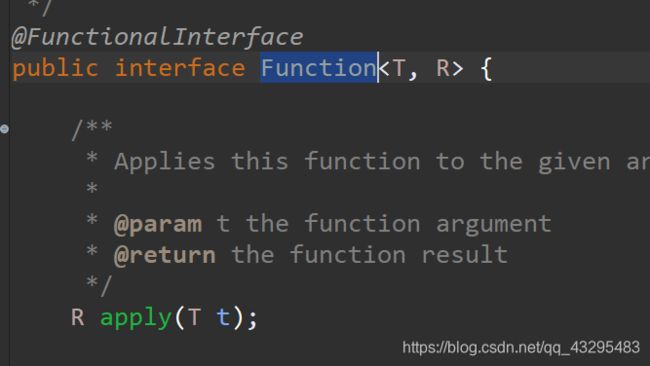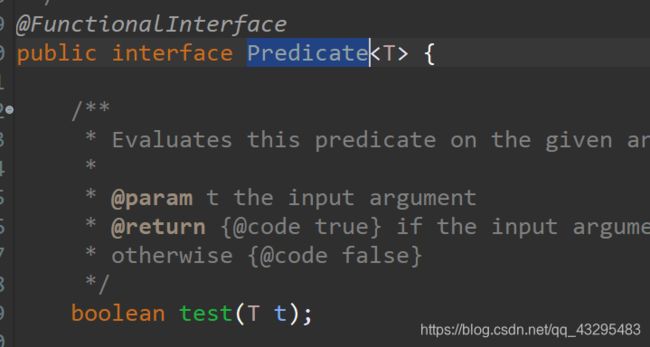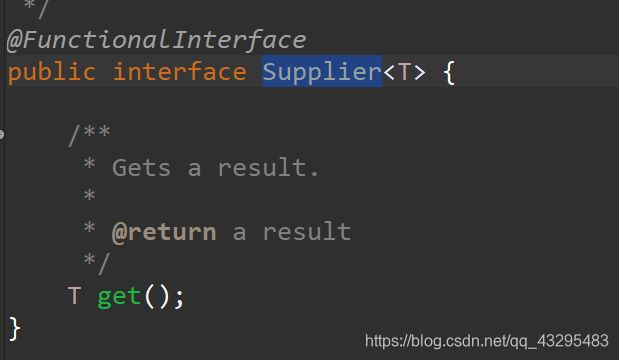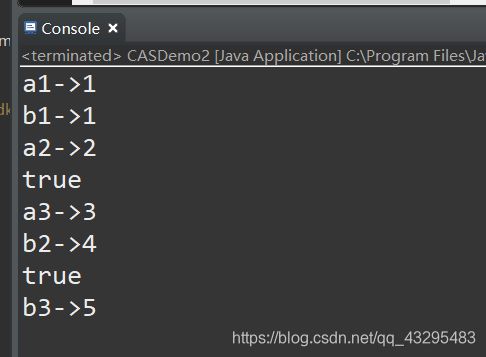JUC并发编程入门学习笔记(狂神说)
目录
1. 什么是JUC
2. 线程和进程
1)进程
2)线程
3)并发
4)并行
5)线程的状态
6)wait/sleep
3.Lock
1)传统的 synchronized
2)Lock
3).Synchronized 与Lock 的区别
4. 生产者和消费者的关系
1)Synchronzied 版本
2)JUC版本的生产者和消费者问题
5、6锁现象
6、不安全的集合类
HashSet底层是什么?
7、Callable
8、常用的辅助类(必会!)
8.1 CountDownLatch
8.2 CyclickBarrier
8.3 Semaphore
9、读写锁
10、阻塞队列
BlockingQueue
如何使用阻塞队列呢?
SynchronousQueue同步队列
11、线程池(重点)
12、四大函数式接口(必需掌握)
13、Stream流式计算
14、ForkJoin
15、异步回调
(1)没有返回值的runAsync异步回调
(2)有返回值的异步回调supplyAsync
16.深入理解CAS
17、原子引用
18. 各种锁的理解
1、公平锁、非公平锁
2、可重入锁
3.自旋锁
4.死锁
因为热爱所以坚持,因为热爱所以等待。熬过漫长无戏可演的日子,终于换来了人生的春天,共勉!!!
1. 什么是JUC
JUC就是java.util.concurrent下面的类包,专门用于多线程的开发。
2. 线程和进程
进程是操作系统中的应用程序、是资源分配的基本单位,线程是用来执行具体的任务和功能,是CPU调度和分派的最小单位
一个进程往往可以包含多个线程,至少包含一个
1)进程
一个程序,QQ.EXE Music.EXE;数据+代码+pcb
一个进程可以包含多个线程,至少包含一个线程!
Java默认有几个线程?2个线程! main线程、GC线程
2)线程
开了一个进程Typora,写字,等待几分钟会进行自动保存(线程负责的)
对于Java而言:Thread、Runable、Callable进行开启线程的。
提问?JAVA真的可以开启线程吗? 开不了的!
Java是没有权限去开启线程、操作硬件的,这是一个native的一个本地方法,它调用的底层的C++代码。
public synchronized void start() {
/**
* This method is not invoked for the main method thread or "system"
* group threads created/set up by the VM. Any new functionality added
* to this method in the future may have to also be added to the VM.
*
* A zero status value corresponds to state "NEW".
*/
if (threadStatus != 0)
throw new IllegalThreadStateException();
/* Notify the group that this thread is about to be started
* so that it can be added to the group's list of threads
* and the group's unstarted count can be decremented. */
group.add(this);
boolean started = false;
try {
start0();
started = true;
} finally {
try {
if (!started) {
group.threadStartFailed(this);
}
} catch (Throwable ignore) {
/* do nothing. If start0 threw a Throwable then
it will be passed up the call stack */
}
}
}
//这是一个C++底层,Java是没有权限操作底层硬件的
private native void start0();3)并发
多线程操作同一个资源。
- CPU 只有一核,模拟出来多条线程,天下武功,唯快不破。那么我们就可以使用CPU快速交替,来模拟多线程。
- 并发编程的本质:充分利用CPU的资源!
4)并行
- CPU多核,多个线程可以同时执行。 我们可以使用线程池!
获取cpu的核数
public class Test1 {
public static void main(String[] args) {
//获取cpu的核数
System.out.println(Runtime.getRuntime().availableProcessors());
}
}5)线程的状态
Thread类中有个内部枚举,可以看到六种状态
public enum State {
/**
* Thread state for a thread which has not yet started.
*/
//运行
NEW,
/**
* Thread state for a runnable thread. A thread in the runnable
* state is executing in the Java virtual machine but it may
* be waiting for other resources from the operating system
* such as processor.
*/
//运行
RUNNABLE,
/**
* Thread state for a thread blocked waiting for a monitor lock.
* A thread in the blocked state is waiting for a monitor lock
* to enter a synchronized block/method or
* reenter a synchronized block/method after calling
* {@link Object#wait() Object.wait}.
*/
//阻塞
BLOCKED,
/**
* Thread state for a waiting thread.
* A thread is in the waiting state due to calling one of the
* following methods:
*
* - {@link Object#wait() Object.wait} with no timeout
* - {@link #join() Thread.join} with no timeout
* - {@link LockSupport#park() LockSupport.park}
*
*
* A thread in the waiting state is waiting for another thread to
* perform a particular action.
*
* For example, a thread that has called Object.wait()
* on an object is waiting for another thread to call
* Object.notify() or Object.notifyAll() on
* that object. A thread that has called Thread.join()
* is waiting for a specified thread to terminate.
*/
//等待
WAITING,
/**
* Thread state for a waiting thread with a specified waiting time.
* A thread is in the timed waiting state due to calling one of
* the following methods with a specified positive waiting time:
*
* - {@link #sleep Thread.sleep}
* - {@link Object#wait(long) Object.wait} with timeout
* - {@link #join(long) Thread.join} with timeout
* - {@link LockSupport#parkNanos LockSupport.parkNanos}
* - {@link LockSupport#parkUntil LockSupport.parkUntil}
*
*/
//超时等待
TIMED_WAITING,
/**
* Thread state for a terminated thread.
* The thread has completed execution.
*/
//终止
TERMINATED;
}6)wait/sleep
1、来自不同的类
wait => Object
sleep => Thread
一般情况企业中使用休眠是:
TimeUnit.DAYS.sleep(1); //休眠1天
TimeUnit.SECONDS.sleep(1); //休眠1s2、关于锁的释放
wait 会释放锁;
sleep睡觉了,不会释放锁;
3、使用的范围是不同的
wait 必须在同步代码块中;
sleep 可以在任何地方睡;
4、是否需要捕获异常
wait必须要捕获异常;
sleep必须要捕获异常;
3.Lock
1)传统的 synchronized
2)Lock
![]()
![]()
公平锁: 十分公平,必须先来后到~;
非公平锁: 十分不公平,可以插队;(默认为非公平锁)
3).Synchronized 与Lock 的区别
1、Synchronized 内置的Java关键字,Lock是一个Java类
2、Synchronized 无法判断获取锁的状态,Lock可以判断
3、Synchronized 会自动释放锁,lock必须要手动加锁和手动释放锁!可能会遇到死锁
4、Synchronized 线程1(获得锁->阻塞)、线程2(等待);lock就不一定会一直等待下去,lock会有一个trylock去尝试获取锁,不会造成长久的等待。
5、Synchronized 是可重入锁,不可以中断的,非公平的;Lock,可重入的,可以判断锁,可以自己设置公平锁和非公平锁;
4. 生产者和消费者的关系
1)Synchronzied 版本
public class A {
public static void main(String[] args) {
Data data = new Data();
new Thread(()->{for(int i=0;i<10;i++) {
try {
data.increment();
} catch (InterruptedException e) {
e.printStackTrace();
}
}
},"A").start();
new Thread(()->{for(int i=0;i<10;i++) {
try {
data.decrement();
} catch (InterruptedException e) {
e.printStackTrace();
}
}},"B").start();
}
}
class Data{
//数字 资源类
private int number = 0;
//+1
public synchronized void increment() throws InterruptedException {
if(number!=0){
//等待操作
this.wait();
}
number++;
System.out.println(Thread.currentThread().getName()+"=>"+number);
//通知其他线程 我+1完毕了
this.notifyAll();
}
//-1
public synchronized void decrement() throws InterruptedException {
if(number==0){
//等待操作
this.wait();
}
number--;
System.out.println(Thread.currentThread().getName()+"=>"+number);
//通知其他线程 我-1完毕了
this.notifyAll();
}
}
但是存在一个问题,现在是A,B连两个线程,现在如果我有四个线程A B C D!
public class A {
public static void main(String[] args) {
Data data = new Data();
new Thread(()->{
for(int i=0;i<10;i++) {
try {
data.increment();
} catch (InterruptedException e) {
e.printStackTrace();
}
}
},"A").start();
new Thread(()->{for(int i=0;i<10;i++) {
try {
data.decrement();
} catch (InterruptedException e) {
e.printStackTrace();
}
}},"B").start();
new Thread(()->{for(int i=0;i<10;i++) {
try {
data.increment();
} catch (InterruptedException e) {
e.printStackTrace();
}
}},"C").start();
new Thread(()->{for(int i=0;i<10;i++) {
try {
data.decrement();
} catch (InterruptedException e) {
e.printStackTrace();
}
}},"D").start();
}
}
class Data{
//数字 资源类
private int number = 0;
//+1
public synchronized void increment() throws InterruptedException {
if(number!=0){
//等待操作
this.wait();
}
number++;
System.out.println(Thread.currentThread().getName()+"=>"+number);
//通知其他线程 我+1完毕了
this.notifyAll();
}
//-1
public synchronized void decrement() throws InterruptedException {
if(number==0){
//等待操作
this.wait();
}
number--;
System.out.println(Thread.currentThread().getName()+"=>"+number);
//通知其他线程 我-1完毕了
this.notifyAll();
}
}
结果:出现错误
解决方案: if 改为while即可,防止虚假唤醒
这样就不存在问题了:
public class A {
public static void main(String[] args) {
Data data = new Data();
new Thread(()->{
for(int i=0;i<10;i++) {
try {
data.increment();
} catch (InterruptedException e) {
e.printStackTrace();
}
}
},"A").start();
new Thread(()->{for(int i=0;i<10;i++) {
try {
data.decrement();
} catch (InterruptedException e) {
e.printStackTrace();
}
}},"B").start();
new Thread(()->{for(int i=0;i<10;i++) {
try {
data.increment();
} catch (InterruptedException e) {
e.printStackTrace();
}
}},"C").start();
new Thread(()->{for(int i=0;i<10;i++) {
try {
data.decrement();
} catch (InterruptedException e) {
e.printStackTrace();
}
}},"D").start();
}
}
class Data{
//数字 资源类
private int number = 0;
//+1
public synchronized void increment() throws InterruptedException {
while(number!=0){ //if改成while
//等待操作
this.wait();
}
number++;
System.out.println(Thread.currentThread().getName()+"=>"+number);
//通知其他线程 我+1完毕了
this.notifyAll();
}
//-1
public synchronized void decrement() throws InterruptedException {
while(number==0){ //if改成while
//等待操作
this.wait();
}
number--;
System.out.println(Thread.currentThread().getName()+"=>"+number);
//通知其他线程 我-1完毕了
this.notifyAll();
}
}
结果:成功实现四个线程互斥
2)JUC版本的生产者和消费者问题
await、signal 替换 wait、notify
![]()
![]()
public class B {
public static void main(String[] args) {
Data2 data2 = new Data2();
new Thread(() -> {for (int i = 0; i < 10; i++) {
data2.increment();
}},"A").start();
new Thread(() -> {for (int i = 0; i < 10; i++) {
data2.decrement();
}},"B").start();
new Thread(() -> {for (int i = 0; i < 10; i++) {
data2.increment();
}},"C").start();
new Thread(() -> {for (int i = 0; i < 10; i++) {
data2.increment();
}},"D").start();
}
}
class Data2 {
private int number = 0;
Lock lock = new ReentrantLock();
Condition condition = lock.newCondition();
public void increment() {
lock.lock();
try {
while (number != 0) {
//等待
condition.await();
}
number++;
System.out.println(Thread.currentThread().getName()+"=>"+number);
//通知其他线程,+1完毕了
condition.signalAll();
} catch (InterruptedException e) {
// TODO Auto-generated catch block
e.printStackTrace();
}
}
public void decrement() {
lock.lock();
try {
while (number == 0) {
//等待
condition.await();
}
number--;
System.out.println(Thread.currentThread().getName()+"=>"+number);
//通知其他线程,+1完毕了
condition.signalAll();
} catch (InterruptedException e) {
// TODO Auto-generated catch block
e.printStackTrace();
}
}
}结果:实现互斥操作
相比于wait和notify方法只能随机唤醒线程,Condition的优势:精准的通知和唤醒的线程!
通过condition1、condition2 、condition3 的交替使用,完成流程控制A-->B-->C
import java.util.concurrent.locks.Condition;
import java.util.concurrent.locks.Lock;
import java.util.concurrent.locks.ReentrantLock;
/**
* A 执行完 调用B
* B 执行完 调用C
* C 执行完 调用A
*/
public class C {
public static void main(String[] args) {
Data3 data3 = new Data3();
new Thread(()->{
for(int i=0;i<10;i++){
data3.printA();
}
},"A").start();
new Thread(()->{
for(int i=0;i<10;i++){
data3.printB();
}
},"B").start();
new Thread(()->{
for(int i=0;i<10;i++){
data3.printC();
}
},"C").start();
}
}
class Data3{
//资源类
private Lock lock=new ReentrantLock();
private Condition condition1 = lock.newCondition();
private Condition condition2 = lock.newCondition();
private Condition condition3 = lock.newCondition();
private int number = 1; //1A 2B 3C
public void printA(){
lock.lock();
try {
//业务 判断 -> 执行 -> 通知
while(number!=1){
//等待
condition1.await();
}
//操作
System.out.println(Thread.currentThread().getName()+"=>"+number);
//唤醒指定的线程
number=2;
condition2.signal(); // 唤醒2
} catch (Exception e) {
e.printStackTrace();
} finally {
lock.unlock();
}
}
public void printB(){
lock.lock();
try {
//业务 判断 -> 执行 -> 通知
while (number!=2){
condition2.await();
}
System.out.println(Thread.currentThread().getName()+"=>"+number);
//唤醒3
number=3;
condition3.signal();
} catch (Exception e) {
e.printStackTrace();
} finally {
lock.unlock();
}
}
public void printC(){
lock.lock();
try {
//业务 判断 -> 执行 -> 通知
while(number!=3){
condition3.await();
}
System.out.println(Thread.currentThread().getName()+"=>"+number);
//唤醒1
number=1;
condition1.signal();
} catch (Exception e) {
e.printStackTrace();
} finally {
lock.unlock();
}
}
}
结果:实现了三个流程的互斥控制
5、6锁现象
如何判断锁的是谁!锁到底锁的是谁?
锁会锁住:对象、Class
深刻理解我们的锁
问题1:sendMes和call之间停了4秒,下面这段代码运行是先发短信还是先打电话呢?
public class Test1 {
public static void main(String[] args) {
Phone phone = new Phone();
new Thread(() -> {
phone.sendMes();
},"A").start();
try {
TimeUnit.SECONDS.sleep(4);
} catch (InterruptedException e) {
// TODO Auto-generated catch block
e.printStackTrace();
}
new Thread(() -> {
phone.call();
},"B").start();
}
}
class Phone {
public synchronized void sendMes() {
System.out.println("发短信");
}
public synchronized void call() {
System.out.println("打电话");
}
}
问题2 :还是一样,下面这段代码运行是先发短信还是先打电话呢?
public class Test1 {
public static void main(String[] args) {
Phone phone = new Phone();
new Thread(() -> {
try {
TimeUnit.SECONDS.sleep(4);
} catch (InterruptedException e) {
// TODO Auto-generated catch block
e.printStackTrace();
}
phone.sendMes();
},"A").start();
// try {
// TimeUnit.SECONDS.sleep(4);
// } catch (InterruptedException e) {
// // TODO Auto-generated catch block
// e.printStackTrace();
// }
new Thread(() -> {
phone.call();
},"B").start();
}
}
class Phone {
public synchronized void sendMes() {
System.out.println("发短信");
}
public synchronized void call() {
System.out.println("打电话");
}
}
为什么呢?
- 原因:并不是按代码先后顺序执行!是因为synchronized 锁的对象是方法的调用者!对于两个方法用的是同一个锁,问题一的代码,sendMes先拿到锁所以先执行,而问题二的代码因为在sendMes调用之前停了4秒,所以call先拿到锁,call先执行,sendMes阻塞等待call执行完。
- 一把锁,谁拿到锁谁先执行!另外一个则等待!
问题3:创建两个对象,一个调用发短信,一个调用打电话,那么整个顺序是怎么样的呢?
package 锁;
import java.util.concurrent.TimeUnit;
public class Test1 {
public static void main(String[] args) throws InterruptedException {
Phone phone1 = new Phone();
Phone phone2 = new Phone();
new Thread(() -> {
try {
phone1.sendMes();
} catch (InterruptedException e) {
// TODO Auto-generated catch block
e.printStackTrace();
}
},"A").start();
TimeUnit.SECONDS.sleep(2);
new Thread(() -> {
phone2.call();
},"B").start();
}
}
class Phone {
public synchronized void call() {
System.out.println("打电话");
}
public synchronized void sendMes() throws InterruptedException {
TimeUnit.SECONDS.sleep(4);
System.out.println("发短信");
}
public void hello () {
System.out.println("hello world!!!");
}
}
我们可以看到代码中sendMes方法先获得锁,并且在方法中停了4秒,但是并没有造成call方法阻塞,这是因为是两个不同的对象,每个对象都有一把锁
问题4:两个对象,如果我们把synchronized的方法加上static变成静态方法!那么顺序又是怎么样的呢?
package 锁;
import java.util.concurrent.TimeUnit;
public class Test1 {
public static void main(String[] args) throws InterruptedException {
Phone phone1 = new Phone();
Phone phone2 = new Phone();
new Thread(() -> {
try {
phone1.sendMes();
} catch (InterruptedException e) {
// TODO Auto-generated catch block
e.printStackTrace();
}
},"A").start();
TimeUnit.SECONDS.sleep(2);
new Thread(() -> {
phone2.call();
},"B").start();
}
}
class Phone {
public synchronized static void call() {
System.out.println("打电话");
}
public synchronized static void sendMes() throws InterruptedException {
TimeUnit.SECONDS.sleep(4);
System.out.println("发短信");
}
}
对于static静态方法来说,对于整个类Class来说只有一份,如果静态static方法使用synchronized锁定,那么这个synchronized锁会锁住整个Class对象!不管多少个对象,对于静态的锁都只有一把锁,谁先拿到这个锁就先执行,其他的进程都需要等待!
问题6:一个对象,如果我们使用一个静态同步方法、一个同步方法、一个对象调用顺序是什么?
package 锁;
import java.util.concurrent.TimeUnit;
public class Test1 {
public static void main(String[] args) throws InterruptedException {
Phone phone1 = new Phone();
//Phone phone2 = new Phone();
new Thread(() -> {
try {
phone1.sendMes();
} catch (InterruptedException e) {
// TODO Auto-generated catch block
e.printStackTrace();
}
},"A").start();
TimeUnit.SECONDS.sleep(2);
new Thread(() -> {
phone1.call();
},"B").start();
}
}
class Phone {
public synchronized static void call() {
System.out.println("打电话");
}
public synchronized void sendMes() throws InterruptedException {
TimeUnit.SECONDS.sleep(4);
System.out.println("发短信");
}
}
事实证明,打电话先执行了,因为static call方法使用的Class锁,sendMes使用的是对象锁,所以不会造成阻塞
小结:Class锁只有一把,所有静态资源共用,而对象锁是每个对象有一把
6、不安全的集合类
List不安全
我们来看一下List这个集合类:
//java.util.ConcurrentModificationException 并发修改异常!
public class ListTest {
public static void main(String[] args) {
ListArrayList 在并发情况下是不安全的!会造成并发修改异常:
解决方案:
1、切换成Vector就是线程安全的啦!
public class ListTest {
public static void main(String[] args) {
List2、使用Collections.synchronizedList(new ArrayList<>());
public class ListTest {
public static void main(String[] args) {
List arrayList = Collections.synchronizedList(new ArrayList<>());
for(int i=1;i<=100;i++){
new Thread(()->{
arrayList.add(UUID.randomUUID().toString().substring(0,5));
System.out.println(arrayList);
},String.valueOf(i)).start();
}
}
} 3、使用JUC中的包:List arrayList = new CopyOnWriteArrayList<>();
public class ListTest {
public static void main(String[] args) {
List arrayList = new CopyOnWriteArrayList<>();
for(int i=1;i<=10000;i++){
new Thread(()->{
arrayList.add(UUID.randomUUID().toString().substring(0,5));
System.out.println(arrayList);
},String.valueOf(i)).start();
}
}
} CopyOnWriteArrayList:写入时复制! COW 计算机程序设计领域的一种优化策略
Set和List同理可得: 多线程情况下,普通的Set集合是线程不安全的;
解决方案还是两种:
- 使用Collections工具类的synchronized包装的Set类
- 使用CopyOnWriteArraySet 写入复制的JUC解决方案
//同理:java.util.ConcurrentModificationException
// 解决方案:
public class SetTest {
public static void main(String[] args) {
// Set hashSet = Collections.synchronizedSet(new HashSet<>()); //解决方案1
Set hashSet = new CopyOnWriteArraySet<>();//解决方案2
for (int i = 1; i < 100; i++) {
new Thread(()->{
hashSet.add(UUID.randomUUID().toString().substring(0,5));
System.out.println(hashSet);
},String.valueOf(i)).start();
}
}
}
HashSet底层是什么?
hashSet底层就是一个HashMap;
public HashSet() {
map = new HashMap<>();
}
//add 本质其实就是一个map的key,map的key是无法重复的,所以使用的就是map存储
//hashSet就是使用了hashmap key不能重复的原理
public boolean add(E e) {
return map.put(e, PRESENT)==null;
}
//PRESENT是什么? 是一个常量 不会改变的常量 无用的占位
private static final Object PRESENT = new Object();
Map不安全
同样的HashMap基础类也存在并发修改异常!
public static void main(String[] args) {
//map 是这样用的吗? 不是,工作中不使用这个
//默认等价什么? new HashMap<>(16,0.75);
Map map = new HashMap<>();
//加载因子、初始化容量
for (int i = 1; i < 100; i++) {
new Thread(()->{
map.put(Thread.currentThread().getName(),UUID.randomUUID().toString().substring(0,5));
System.out.println(map);
},String.valueOf(i)).start();
}
}
解决方案:
- 使用Collections.synchronizedMap(new HashMap<>());处理;
- 使用ConcurrentHashMap进行并发处理
7、Callable
![]()
1、可以有返回值;
2、可以抛出异常;
3、方法不同,run()/call()
传统使用线程方式:
public class CallableTest {
public static void main(String[] args) {
for (int i = 1; i < 10; i++) {
new Thread(new MyThread()).start();
}
}
}
class MyThread implements Runnable{
@Override
public void run() {
System.out.println(Thread.currentThread().getName());
}
}
使用Callable进行多线程操作:
Calleable 泛型T就是call运行方法的返回值类型;
但是如何使用呢?
源码分析:
Callable怎么放入到Thread里面呢?
看JDK api文档:
在Runnable里面有一个叫做FutureTask的实现类,我们进去看一下。
![]()
FutureTask中可以接受Callable参数;
![]()
这样我们就可以先把Callable 放入到FutureTask中, 如何再把FutureTask 放入到Thread就可以了。
public class CallableDemo {
public static void main(String[] args) throws InterruptedException, ExecutionException {
// new Thread(new Runnable()).start();
// new Thread(new FutureTask<>( Callable)).start();
for (int j = 1; j < 10; j++) {
MyThread2 myThread2 = new MyThread2();
//适配类FutureTask
FutureTask futureTask = new FutureTask(myThread2);
//放入Thread使用
new Thread(futureTask,String.valueOf(j)).start();
//获取返回值
String s = futureTask.get();
System.out.println("返回值:"+ s);
}
}
}
class MyThread2 implements Callable {
@Override
public String call() throws Exception {
// TODO Auto-generated method stub
System.out.println("Call:"+Thread.currentThread().getName());
return "String"+Thread.currentThread().getName();
}
} 这样我们就可以使用Callable来进行多线程编程了,并且我们发现可以有返回值,并且可以抛出异常。
注意:两点
运行结果:
8、常用的辅助类(必会!)
8.1 CountDownLatch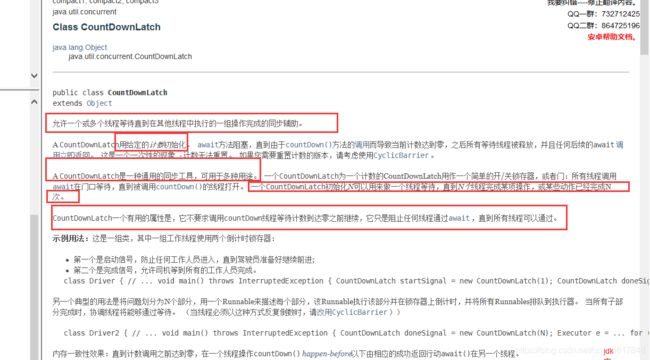
其实就是一个减法计数器,对于计数器归零之后再进行后面的操作,这是一个计数器!
public class CountDownLatchDemo {
public static void main(String[] args) throws InterruptedException {
CountDownLatch countDownLatch = new CountDownLatch(6);
for (int i = 1; i <= 6; i++) {
new Thread(() -> {
System.out.println(Thread.currentThread().getName()+" Go out");
countDownLatch.countDown(); //每个线程都数量-1
},String.valueOf(i)).start();
}
countDownLatch.await();//等待计数器归零,就是执行了6次new Thread 后清零,才继续往下执行
System.out.println("close door");
}
}
主要方法:
- countDown 减一操作;
- await 等待计数器归零。
await等待计数器为0,就唤醒,再继续向下运行。
8.2 CyclickBarrier
![]()
其实就是一个加法计数器;
当线程数达到设置的7时,才触发await(),唤醒,召唤出神龙
public class CyclickBarrierDemo {
public static void main(String[] args) {
//主线程
CyclicBarrier cyclicBarrier = new CyclicBarrier(7, () ->{
System.out.println("召唤神龙!!!");
});
for(int i = 0; i <= 7; i++) {
int finalI = i;
new Thread(() -> {
System.out.println(Thread.currentThread().getName()+"收集了第 {"+ finalI+"} 颗龙珠");
try {
cyclicBarrier.await();
} catch (Exception e) {
e.printStackTrace();
}
}).start();
}
}
}8.3 Semaphore
Semaphore:信号量
抢车位:
3个车位 6辆车:
public class SemaphoreDemo {
public static void main(String[] args) {
Semaphore semaphore = new Semaphore(3);
for (int i = 1; i <= 6; i++) {
int finalI = i;
new Thread(() -> {
try {
semaphore.acquire();//得到
System.out.println(Thread.currentThread().getName());
TimeUnit.SECONDS.sleep(2);
} catch (Exception e) {
e.printStackTrace();
}finally {
semaphore.release();//释放
}
},String.valueOf(i)).start();
}
}
}原理:
semaphore.acquire()获得资源,如果资源已经使用完了,就等待资源释放后再进行使用!
semaphore.release()释放,会将当前的信号量释放+1,然后唤醒等待的线程!
作用: 多个共享资源互斥的使用! 并发限流,控制最大的线程数!
9、读写锁
先对于不加锁的情况:
如果我们做一个我们自己的cache缓存。分别有写入操作、读取操作;
我们采用五个线程去写入,使用十个线程去读取。
我们来看一下这个的效果,如果我们不加锁的情况!
public class ReadWriteLockDemo {
public static void main(String[] args) {
MyCache_ReadWriteLock mycache = new MyCache_ReadWriteLock();
//开启5个线程 写入数据
for (int i = 1; i <=5 ; i++) {
int finalI = i;
new Thread(()->{
mycache.put(String.valueOf(finalI),String.valueOf(finalI));
}).start();
}
//开启10个线程去读取数据
for (int i = 1; i <=10 ; i++) {
int finalI = i;
new Thread(()->{
String o = mycache.get(String.valueOf(finalI));
}).start();
}
}
}
class MyCache_ReadWriteLock{
private volatile Map map=new HashMap<>();
//使用读写锁
private ReadWriteLock readWriteLock=new ReentrantReadWriteLock();
//普通锁
private Lock lock=new ReentrantLock();
public void put(String key,String value){
//写入
System.out.println(Thread.currentThread().getName()+" 线程 开始写入");
map.put(key, value);
System.out.println(Thread.currentThread().getName()+" 线程 写入OK");
}
public String get(String key){
//得到
System.out.println(Thread.currentThread().getName()+" 线程 开始读取");
String o = map.get(key);
System.out.println(Thread.currentThread().getName()+" 线程 读取OK");
return o;
}
} 结果:
Thread-0 线程 开始写入
Thread-4 线程 开始写入 # 插入了其他的线程进行写入
Thread-4 线程 写入OK
Thread-3 线程 开始写入
Thread-1 线程 开始写入
Thread-2 线程 开始写入
Thread-1 线程 写入OK
Thread-3 线程 写入OK
Thread-0 线程 写入OK # 对于这种情况会出现 数据不一致等情况
Thread-2 线程 写入OK
Thread-5 线程 开始读取
Thread-6 线程 开始读取
Thread-6 线程 读取OK
Thread-7 线程 开始读取
Thread-7 线程 读取OK
Thread-5 线程 读取OK
Thread-8 线程 开始读取
Thread-8 线程 读取OK
Thread-9 线程 开始读取
Thread-9 线程 读取OK
Thread-10 线程 开始读取
Thread-11 线程 开始读取
Thread-12 线程 开始读取
Thread-12 线程 读取OK
Thread-10 线程 读取OK
Thread-14 线程 开始读取
Thread-13 线程 开始读取
Thread-13 线程 读取OK
Thread-11 线程 读取OK
Thread-14 线程 读取OK
Process finished with exit code 0所以如果我们不加锁的情况,多线程的读写会造成数据不可靠的问题。
我们也可以采用synchronized这种重量锁和轻量锁 lock去保证数据的可靠。
但是这次我们采用更细粒度的锁:ReadWriteLock 读写锁来保证![]()
public class ReadWriteLockDemo {
/**
* 独占锁(写锁),一次只能被一个线程占有
* 共享锁(读锁),多个线程可以同时
*
*
*/
public static void main(String[] args) {
MyCache myCache = new MyCache();
for (int i = 0; i <= 5; i++) {
final int temp = i;
new Thread(() -> {
myCache.put(temp+"",temp+"");
},String.valueOf(i)).start();
}
for (int i = 0; i <= 5; i++) {
final int temp = i;
new Thread(() -> {
myCache.get(temp+"");
},String.valueOf(i)).start();
}
}
}
class MyCache {
private ReadWriteLock readwritelock = new ReentrantReadWriteLock();
private volatile Map map = new HashMap();
//Write
public void put(String key,Object value) {
readwritelock.writeLock().lock();
try {
System.out.println(Thread.currentThread().getName()+"写入"+key);
map.put(key, value);
System.out.println(Thread.currentThread().getName()+"写入完成");
} catch (Exception e) {
e.printStackTrace();
}finally {
readwritelock.writeLock().unlock();
}
}
//Read
public void get(String key) {
readwritelock.readLock().lock();
try {
System.out.println(Thread.currentThread().getName()+"读取"+key);
Object o = map.get(key);
System.out.println(Thread.currentThread().getName()+"读取成功");
} catch (Exception e) {
e.printStackTrace();
}
finally {
readwritelock.readLock().unlock();
}
}
} 结果:
10、阻塞队列
![]()
阻塞队列jdk1.8文档解释:
![]()
BlockingQueue
blockingQueue 是Collection的一个子类;
什么情况我们会使用 阻塞队列呢?
多线程并发处理、线程池!
整个阻塞队列的家族如下:Queue以下实现的有Deque、AbstaractQueue、BlockingQueue;
BlockingQueue以下有Link链表实现的阻塞队列、也有Array数组实现的阻塞队列
如何使用阻塞队列呢?
操作:添加、移除
但是实际我们要学的有:
四组API
| 方式 | 抛出异常 | 不会抛出异常,有返回值 | 阻塞 等待 | 超时 等待 |
|---|---|---|---|---|
| 添加 | add | offer | put | offer(timenum,timeUnit) |
| 移除 | remove | poll | take | poll(timenum,timeUnit) |
| 判断队列首 | element | peek | - | - |
public class BlockingQueueDemo {
public static void main(String[] args) {
test2();
}
//抛异常
public static void test() {
ArrayBlockingQueue blockingQueue = new ArrayBlockingQueue<>(3);
System.out.println(blockingQueue.add("a"));
System.out.println(blockingQueue.add("b"));
System.out.println(blockingQueue.add("c"));
//System.out.println(blockingQueue.add("d"));
System.out.println(blockingQueue.remove());
System.out.println(blockingQueue.remove());
System.out.println(blockingQueue.remove());
System.out.println(blockingQueue.remove());
}
//不抛异常,返回null
public static void test2() {
ArrayBlockingQueue blockingQueue = new ArrayBlockingQueue<>(3);
System.out.println(blockingQueue.offer("a"));
System.out.println(blockingQueue.offer("b"));
System.out.println(blockingQueue.offer("c"));
System.out.println(blockingQueue.offer("d"));
//System.out.println(blockingQueue.add("d"));
System.out.println(blockingQueue.poll());
System.out.println(blockingQueue.poll());
System.out.println(blockingQueue.poll());
System.out.println(blockingQueue.poll());
}
public static void test3() throws InterruptedException {
ArrayBlockingQueue blockingQueue = new ArrayBlockingQueue<>(3);
blockingQueue.put("a");
blockingQueue.put("b");
blockingQueue.put("c");
//System.out.println(blockingQueue.add("d"));
blockingQueue.take();
blockingQueue.take();
blockingQueue.take();
}
public static void test4() throws InterruptedException {
ArrayBlockingQueue blockingQueue = new ArrayBlockingQueue<>(3);
System.out.println(blockingQueue.offer("a", 2, TimeUnit.SECONDS));
System.out.println(blockingQueue.offer("b",2, TimeUnit.SECONDS));
System.out.println(blockingQueue.offer("c",2, TimeUnit.SECONDS));
System.out.println(blockingQueue.offer("b", 2, TimeUnit.SECONDS));
//System.out.println(blockingQueue.add("d"));
System.out.println(blockingQueue.poll(2, TimeUnit.SECONDS));
System.out.println(blockingQueue.poll(2, TimeUnit.SECONDS));
System.out.println(blockingQueue.poll(2, TimeUnit.SECONDS));
System.out.println(blockingQueue.poll(2, TimeUnit.SECONDS));
}
SynchronousQueue同步队列
同步队列 没有容量,也可以视为容量为1的队列;
进去一个元素,必须等待取出来之后,才能再往里面放入一个元素;
put方法 和 take方法;
Synchronized 和 其他的BlockingQueue 不一样 它不存储元素;
put了一个元素,就必须从里面先take出来,否则不能再put进去值!
并且SynchronousQueue 的take是使用了lock锁保证线程安全的。
public class SynchronousQueueDemo {
public static void main(String[] args) {
BlockingQueue blockingQueue = new SynchronousQueue<>();
new Thread(()-> {
try {
blockingQueue.put("1");
System.out.println(Thread.currentThread().getName()+" put 1");
blockingQueue.put("2");
System.out.println(Thread.currentThread().getName()+" put 2");
blockingQueue.put("3");
System.out.println(Thread.currentThread().getName()+" put 3");
} catch (InterruptedException e) {
// TODO Auto-generated catch block
e.printStackTrace();
}
},"T1").start();
new Thread(()-> {
try {
blockingQueue.take();
System.out.println(Thread.currentThread().getName()+" take 1");
blockingQueue.take();
System.out.println(Thread.currentThread().getName()+" take 2");
blockingQueue.take();
System.out.println(Thread.currentThread().getName()+" take 3");
} catch (InterruptedException e) {
// TODO Auto-generated catch block
e.printStackTrace();
}
},"T2").start();
}
} 结果:
11、线程池(重点)
线程池:三大方法、7大参数、4种拒绝策略
池化技术
程序的运行,本质:占用系统的资源!我们需要去优化资源的使用 ===> 池化技术
线程池、JDBC的连接池、内存池、对象池 等等。。。。
资源的创建、销毁十分消耗资源
池化技术:事先准备好一些资源,如果有人要用,就来我这里拿,用完之后还给我,以此来提高效率。
线程池的好处:
1、降低资源的消耗;
2、提高响应的速度;
3、方便管理;
线程复用、可以控制最大并发数、管理线程;
- ExecutorService threadPool = Executors.newSingleThreadExecutor();//单个线程
- ExecutorService threadPool2 = Executors.newFixedThreadPool(5); //创建一个固定的线程池的大小
- ExecutorService threadPool3 = Executors.newCachedThreadPool(); //可伸缩的
//工具类 Executors 三大方法;
public class Demo01 {
public static void main(String[] args) {
ExecutorService threadPool = Executors.newSingleThreadExecutor();//单个线程
ExecutorService threadPool2 = Executors.newFixedThreadPool(5); //创建一个固定的线程池的大小
ExecutorService threadPool3 = Executors.newCachedThreadPool(); //可伸缩的
//线程池用完必须要关闭线程池
try {
for (int i = 1; i <=100 ; i++) {
//通过线程池创建线程
threadPool.execute(()->{
System.out.println(Thread.currentThread().getName()+ " ok");
});
}
} catch (Exception e) {
e.printStackTrace();
} finally {
threadPool.shutdown();
}
}
}
源码分析
public static ExecutorService newSingleThreadExecutor() {
return new FinalizableDelegatedExecutorService
(new ThreadPoolExecutor(1, 1,
0L, TimeUnit.MILLISECONDS,
new LinkedBlockingQueue()));
}
public static ExecutorService newFixedThreadPool(int nThreads) {
return new ThreadPoolExecutor(nThreads, nThreads,
0L, TimeUnit.MILLISECONDS,
new LinkedBlockingQueue());
}
public static ExecutorService newCachedThreadPool() {
return new ThreadPoolExecutor(0, Integer.MAX_VALUE,
60L, TimeUnit.SECONDS,
new SynchronousQueue());
}
本质:三种方法都是开启的ThreadPoolExecutor
7大参数
public ThreadPoolExecutor(int corePoolSize, //核心线程池大小
int maximumPoolSize, //最大的线程池大小
long keepAliveTime, //超时了没有人调用就会释放
TimeUnit unit, //超时单位
BlockingQueue workQueue, //阻塞队列
ThreadFactory threadFactory, //线程工厂 创建线程的 一般不用动
RejectedExecutionHandler handler //拒绝策略
) {
if (corePoolSize < 0 ||
maximumPoolSize <= 0 ||
maximumPoolSize < corePoolSize ||
keepAliveTime < 0)
throw new IllegalArgumentException();
if (workQueue == null || threadFactory == null || handler == null)
throw new NullPointerException();
this.corePoolSize = corePoolSize;
this.maximumPoolSize = maximumPoolSize;
this.workQueue = workQueue;
this.keepAliveTime = unit.toNanos(keepAliveTime);
this.threadFactory = threadFactory;
this.handler = handler;
}
阿里巴巴Java操作手册中明确说明:对于Integer.MAX_VALUE初始值较大,所以一般情况我们要使用底层的ThreadPoolExecutor来创建线程池。
![]()
手动创建线程池
public class ThreadsPoolDemo {
public static void main(String[] args) {
//Executors.newSingleThreadExecutor();
//最大线程池如何定义
//1.cpu密集型,几核就是几个,保持cpu的效率最高
//2.IO密集型,数量 > 判断程序中十分耗IO的线程的数量(2倍)
System.out.println(Runtime.getRuntime().availableProcessors());
ExecutorService threadPool = new ThreadPoolExecutor(
//corePoolSize
2,
//maximumPoolSize
5,
//keepAliveTime
3,
//unit
TimeUnit.SECONDS,
//workQueue
new LinkedBlockingDeque<>(3),
Executors.defaultThreadFactory(),
new ThreadPoolExecutor.AbortPolicy()//拒绝策略,满了直接抛异常
);
//最大承载 Deque + max
for (int i = 1; i <=8; i++) {
threadPool.execute(() -> {
System.out.println(Thread.currentThread().getName()+"ok");
});
}
}业务图
以银行办以业务为例子,总共有5个柜台可以办理业务,这5个就是最大线程数; 但是并不是5个一直都开着,平时常开着的就有2个,这两个叫核心线程; 同时呢有有个顾客排队等待的地方,对应阻塞队列;
当阻塞队列满了的时候,平时不开的线程也启动,达到最大线程,但是当来的数量太多了,大于最大线程+阻塞队列的大小,就会启动拒绝策略
![]()
拒绝策略4种
(1)new ThreadPoolExecutor.AbortPolicy(): //该拒绝策略为:银行满了,还有人进来,不处理这个人的,并抛出异常
超出最大承载,就会抛出异常:队列容量大小+maxPoolSize
(2)new ThreadPoolExecutor.CallerRunsPolicy(): //该拒绝策略为:哪来的去哪里 main线程进行处理
(3)new ThreadPoolExecutor.DiscardPolicy(): //该拒绝策略为:队列满了,丢掉,不会抛出异常。
(4)new ThreadPoolExecutor.DiscardOldestPolicy(): //该拒绝策略为:队列满了,尝试去和最早的进程竞争,不会抛出异常
小结和拓展
如何去设置线程池的最大大小如何去设置?
CPU密集型和IO密集型!
1、CPU密集型
电脑的核数是几核就选择几;选择maximunPoolSize的大小
我们可以使用代码来来获取逻辑处理器数量。
于是cpu密集型的写法如下:
System.out.println(Runtime.getRuntime().availableProcessors());2、I/O密集型:
在程序中有15个大型任务,io十分占用资源;I/O密集型就是判断我们程序中十分耗I/O的线程数量,大约是最大I/O数的一倍到两倍之间。
12、四大函数式接口(必需掌握)
新时代的程序员:lambda表达式、链式编程、函数式接口、Stream流式计算
函数式接口:只有一个方法的接口
@FunctionalInterface
public interface Runnable {
public abstract void run();
}
//超级多的@FunctionalInterface
//简化编程模型,在新版本的框架底层大量应用
//foreach()的参数也是一个函数式接口,消费者类的函数式接口
![]()
函数型接口可以使用lambda表达式;
代码测试:
Function函数型接口
Predicate断定型接口
Consummer 消费型接口
Supplier供给型接口
13、Stream流式计算
什么是Stream流式计算?
存储+计算!
存储:集合、MySQL
计算:流式计算~
=== 链式编程 ===
public class Test {
public static void main(String[] args) {
User user1 = new User(1,"a",21);
User user2 = new User(2,"b",22);
User user3 = new User(3,"c",23);
User user4 = new User(4,"d",24);
User user5 = new User(5,"e",25);
User user6 = new User(6,"f",26);
List list = Arrays.asList(user1, user2, user3, user4, user5, user6);
//计算交给流
//链式编程!!!!
list.stream()
.filter((u)->{ return u.getId()%2==0; })
.filter((u)->{return u.getAge()>23;})
.map((u)->{return u.getName().toUpperCase();})
.sorted((uu1,uu2)->{
return uu2.compareTo(uu1);
})
.limit(1)
.forEach(System.out::println);
}
}
14、ForkJoin
什么是ForkJoin?
ForkJoin 在JDK1.7,并行执行任务!提高效率~。在大数据量速率会更快!
大数据中:MapReduce 核心思想->把大任务拆分为小任务!
![]()
ForkJoin 特点: 工作窃取!
实现原理是:双端队列!从上面和下面都可以去拿到任务进行执行!
![]()
如何使用ForkJoin?
- 1、通过ForkJoinPool来执行
- 2、计算任务 execute(ForkJoinTask task)
![]()
- 3、计算类要去继承ForkJoinTask;
ForkJoin的计算类!
package com.ogj.forkjoin;
import java.util.concurrent.RecursiveTask;
public class ForkJoinDemo extends RecursiveTask {
private long star;
private long end;
//临界值
private long temp=1000000L;
public ForkJoinDemo(long star, long end) {
this.star = star;
this.end = end;
}
/**
* 计算方法
* @return Long
*/
@Override
protected Long compute() {
if((end-star) 测试类!
package com.ogj.forkjoin;
import java.util.concurrent.ExecutionException;
import java.util.concurrent.ForkJoinPool;
import java.util.concurrent.ForkJoinTask;
import java.util.stream.LongStream;
public class Test {
public static void main(String[] args) throws ExecutionException, InterruptedException {
test1();
test2();
test3();
}
/**
* 普通计算
*/
public static void test1(){
long star = System.currentTimeMillis();
long sum = 0L;
for (long i = 1; i < 20_0000_0000; i++) {
sum+=i;
}
long end = System.currentTimeMillis();
System.out.println("sum="+"时间:"+(end-star));
System.out.println(sum);
}
/**
* 使用ForkJoin
*/
public static void test2() throws ExecutionException, InterruptedException {
long star = System.currentTimeMillis();
ForkJoinPool forkJoinPool = new ForkJoinPool();
ForkJoinTask task = new ForkJoinDemo(0L, 20_0000_0000L);
ForkJoinTask submit = forkJoinPool.submit(task);
Long aLong = submit.get();
System.out.println(aLong);
long end = System.currentTimeMillis();
System.out.println("sum="+"时间:"+(end-star));
}
/**
* 使用Stream 并行流
*/
public static void test3(){
long star = System.currentTimeMillis();
//Stream并行流()
long sum = LongStream.range(0L, 20_0000_0000L).parallel().reduce(0, Long::sum);
System.out.println(sum);
long end = System.currentTimeMillis();
System.out.println("sum="+"时间:"+(end-star));
}
}
.parallel().reduce(0, Long::sum)使用一个并行流去计算整个计算,提高效率。
![]()
reduce方法的优点:
![]()
15、异步回调
Future 设计的初衷:对将来的某个事件结果进行建模!
其实就是前端 --> 发送ajax异步请求给后端
![]()
但是我们平时都使用CompletableFuture
(1)没有返回值的runAsync异步回调
public static void main(String[] args) throws ExecutionException, InterruptedException
{
// 发起 一个 请求
System.out.println(System.currentTimeMillis());
System.out.println("---------------------");
CompletableFuture future = CompletableFuture.runAsync(()->{
//发起一个异步任务
try {
TimeUnit.SECONDS.sleep(2);
} catch (InterruptedException e) {
e.printStackTrace();
}
System.out.println(Thread.currentThread().getName()+".....");
});
System.out.println(System.currentTimeMillis());
System.out.println("------------------------------");
//输出执行结果
System.out.println(future.get()); //获取执行结果
}
(2)有返回值的异步回调supplyAsync
//有返回值的异步回调
CompletableFuture completableFuture=CompletableFuture.supplyAsync(()->{
System.out.println(Thread.currentThread().getName());
try {
TimeUnit.SECONDS.sleep(2);
int i=1/0;
} catch (InterruptedException e) {
e.printStackTrace();
}
return 1024;
});
System.out.println(completableFuture.whenComplete((t, u) -> {
//success 回调
System.out.println("t=>" + t); //正常的返回结果
System.out.println("u=>" + u); //抛出异常的 错误信息
}).exceptionally((e) -> {
//error回调
System.out.println(e.getMessage());
return 404;
}).get());
whenComplete: 有两个参数,一个是t 一个是u
T:是代表的 正常返回的结果;
U:是代表的 抛出异常的错误信息;
如果发生了异常,get可以获取到exceptionally返回的值;
16.深入理解CAS
什么是CAS?
大厂必须深入研究底层!!!!修内功!操作系统、计算机网络原理、组成原理、数据结构
public class casDemo {
//CAS : compareAndSet 比较并交换
public static void main(String[] args) {
AtomicInteger atomicInteger = new AtomicInteger(2020);
//boolean compareAndSet(int expect, int update)
//期望值、更新值
//如果实际值 和 我的期望值相同,那么就更新
//如果实际值 和 我的期望值不同,那么就不更新
System.out.println(atomicInteger.compareAndSet(2020, 2021));
System.out.println(atomicInteger.get());
//因为期望值是2020 实际值却变成了2021 所以会修改失败
//CAS 是CPU的并发原语
atomicInteger.getAndIncrement(); //++操作
System.out.println(atomicInteger.compareAndSet(2020, 2021));
System.out.println(atomicInteger.get());
}
}
![]()
Unsafe类
![]()
![]()
总结:
CAS:比较当前工作内存中的值 和 主内存中的值,如果这个值是期望的,那么则执行操作!如果不是就一直循环,使用的是自旋锁。
缺点:
- 循环会耗时;
- 一次性只能保证一个共享变量的原子性;
- 它会存在ABA问题
CAS:ABA问题?(狸猫换太子)
![]()
线程1:期望值是1,要变成2;
线程2:两个操作:
- 1、期望值是1,变成3
- 2、期望是3,变成1
所以对于线程1来说,A的值还是1,所以就出现了问题,骗过了线程1;
17、原子引用
解决ABA问题,对应的思想:就是使用了乐观锁~
带版本号的 原子操作!
Integer 使用了对象缓存机制,默认范围是-128~127,推荐使用静态工厂方法valueOf获取对象实例,而不是new,因为valueOf使用缓存,而new一定会创建新的对象分配新的内存空间。
![]()
所以如果遇到,使用大于128的时候,使用原子引用的时候,如果超过了这个值,那么就不会进行版本上升!
public class CASDemo2 {
//如果泛型是一个包装类,注意对象的引用问题
static AtomicStampedReference atomicStampedReference = new AtomicStampedReference<>(1, 1);
public static void main(String[] args) {
new Thread(() -> {
int stamp = atomicStampedReference.getStamp();
System.out.println("a1->"+stamp);
try {
TimeUnit.SECONDS.sleep(1);
} catch (InterruptedException e) {
// TODO Auto-generated catch block
e.printStackTrace();
}
atomicStampedReference.compareAndSet(1, 2, atomicStampedReference.getStamp(), atomicStampedReference.getStamp() + 1);
System.out.println("a2->"+atomicStampedReference.getStamp());
System.out.println(atomicStampedReference.compareAndSet(2, 1, atomicStampedReference.getStamp(), atomicStampedReference.getStamp() + 1));
System.out.println("a3->"+atomicStampedReference.getStamp());
},"a").start();
new Thread(() -> {
int stamp = atomicStampedReference.getStamp();
System.out.println("b1->"+stamp);
try {
TimeUnit.SECONDS.sleep(2);
} catch (InterruptedException e) {
// TODO Auto-generated catch block
e.printStackTrace();
}
atomicStampedReference.compareAndSet(1, 6, atomicStampedReference.getStamp(), atomicStampedReference.getStamp() + 1);
System.out.println("b2->"+atomicStampedReference.getStamp());
System.out.println(atomicStampedReference.compareAndSet(6, 1, atomicStampedReference.getStamp(), atomicStampedReference.getStamp() + 1));
System.out.println("b3->"+atomicStampedReference.getStamp());
},"b").start();
}
}
结果:
18. 各种锁的理解
1、公平锁、非公平锁
公平锁:非常公平;不能插队的,必须先来后到;
/**
* Creates an instance of {@code ReentrantLock}.
* This is equivalent to using {@code ReentrantLock(false)}.
*/
public ReentrantLock() {
sync = new NonfairSync();
}非公平锁:非常不公平,允许插队的,可以改变顺序。
/**
* Creates an instance of {@code ReentrantLock} with the
* given fairness policy.
*
* @param fair {@code true} if this lock should use a fair ordering policy
*/
public ReentrantLock(boolean fair) {
sync = fair ? new FairSync() : new NonfairSync();
}
2、可重入锁
可重入锁(递归锁)
![]()
Synchronized锁
public class Demo01 {
public static void main(String[] args) {
Phone phone = new Phone();
new Thread(()->{
phone.sms();
},"A").start();
new Thread(()->{
phone.sms();
},"B").start();
}
}
class Phone{
public synchronized void sms(){
System.out.println(Thread.currentThread().getName()+"=> sms");
call();//这里也有一把锁
}
public synchronized void call(){
System.out.println(Thread.currentThread().getName()+"=> call");
}
}
lock锁
//lock
public class Demo02 {
public static void main(String[] args) {
Phone2 phone = new Phone2();
new Thread(()->{
phone.sms();
},"A").start();
new Thread(()->{
phone.sms();
},"B").start();
}
}
class Phone2{
Lock lock=new ReentrantLock();
public void sms(){
lock.lock(); //细节:这个是两把锁,两个钥匙
//lock锁必须配对,否则就会死锁在里面
try {
System.out.println(Thread.currentThread().getName()+"=> sms");
call();//这里也有一把锁
} catch (Exception e) {
e.printStackTrace();
}finally {
lock.unlock();
}
}
public void call(){
lock.lock();
try {
System.out.println(Thread.currentThread().getName() + "=> call");
}catch (Exception e){
e.printStackTrace();
}
finally {
lock.unlock();
}
}
}
- lock锁必须配对,相当于lock和 unlock 必须数量相同;
- 在外面加的锁,也可以在里面解锁;在里面加的锁,在外面也可以解锁;
3.自旋锁
public final int getAndAddInt(Object var1, long var2, int var4) {
int var5;
do {
var5 = this.getIntVolatile(var1, var2);
} while(!this.compareAndSwapInt(var1, var2, var5, var5 + var4));
return var5;
}
自我设计自旋锁:
public class SpinlockDemo {
//int 0
//thread null
AtomicReference atomicReference=new AtomicReference<>();
//加锁
public void myLock(){
Thread thread = Thread.currentThread();
System.out.println(thread.getName()+"===> mylock");
//自旋锁
while (!atomicReference.compareAndSet(null,thread)){
System.out.println(Thread.currentThread().getName()+" ==> 自旋中~");
}
}
//解锁
public void myunlock(){
Thread thread=Thread.currentThread();
System.out.println(thread.getName()+"===> myUnlock");
atomicReference.compareAndSet(thread,null);
}
}
public class TestSpinLock {
public static void main(String[] args) throws InterruptedException {
ReentrantLock reentrantLock = new ReentrantLock();
reentrantLock.lock();
reentrantLock.unlock();
//使用CAS实现自旋锁
SpinlockDemo spinlockDemo=new SpinlockDemo();
new Thread(()->{
spinlockDemo.myLock();
try {
TimeUnit.SECONDS.sleep(3);
} catch (Exception e) {
e.printStackTrace();
} finally {
spinlockDemo.myunlock();
}
},"t1").start();
TimeUnit.SECONDS.sleep(1);
new Thread(()->{
spinlockDemo.myLock();
try {
TimeUnit.SECONDS.sleep(3);
} catch (Exception e) {
e.printStackTrace();
} finally {
spinlockDemo.myunlock();
}
},"t2").start();
}
}
运行结果:
t2进程必须等待t1进程Unlock后,才能Unlock,在这之前进行自旋等待。。。。
4.死锁
死锁是什么?
![]()
死锁测试,怎么排除死锁:
package com.ogj.lock;
import java.util.concurrent.TimeUnit;
public class DeadLock {
public static void main(String[] args) {
String lockA= "lockA";
String lockB= "lockB";
new Thread(new MyThread(lockA,lockB),"t1").start();
new Thread(new MyThread(lockB,lockA),"t2").start();
}
}
class MyThread implements Runnable{
private String lockA;
private String lockB;
public MyThread(String lockA, String lockB) {
this.lockA = lockA;
this.lockB = lockB;
}
@Override
public void run() {
synchronized (lockA){
System.out.println(Thread.currentThread().getName()+" lock"+lockA+"===>get"+lockB);
try {
TimeUnit.SECONDS.sleep(2);
} catch (InterruptedException e) {
e.printStackTrace();
}
synchronized (lockB){
System.out.println(Thread.currentThread().getName()+" lock"+lockB+"===>get"+lockA);
}
}
}
}
解决问题
1、使用jps定位进程号,jdk的bin目录下: 有一个jps
命令:jps -l
![]()
2、使用jstack 进程进程号 找到死锁信息
![]()
一般情况信息在最后:
![]()
面试,工作中!排查问题!
1、日志
2、堆栈信息
参考:
https://blog.csdn.net/qq_41617848/article/details/107619810?


